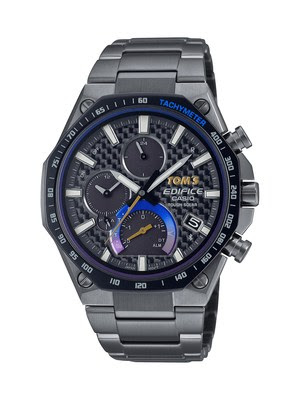Une enquête mondiale montre les changements induits par la pandémie dans les diplômes de MBA et les masters de commerce
RESTON, Va., 19 avr. 2022 (GLOBE NEWSWIRE) — Le Graduate Management Admission Council (GMAC), une association mondiale de prestigieuses écoles supérieures de commerce, a publié aujourd’hui son GMAC Prospective Students Survey – 2022 Summary Report (Enquête auprès des étudiants potentiels – Rapport 2022) qui s’intéresse à l’influence de la pandémie de COVID-19 sur les préférences des candidats. Le rapport était basé sur les réponses à l’enquête apportées par plus de 6 500 personnes dans le monde entier qui souhaitaient faire des études supérieures de commerce en 2021. Si le coût reste une préoccupation majeure dans l’économie dynamique d’aujourd’hui, avec un marché de l’emploi en pleine évolution et une inflation en hausse, la perception des études supérieures en management demeure stable au niveau international. Comme avant la pandémie, les candidats continuent de les considérer comme une voie efficace pour progresser sur le plan professionnel et se positionner en vue d’atteindre leurs objectifs. À l’échelle mondiale, 4 candidats sur 5 ont déclaré qu’un diplôme de commerce leur permettait de se démarquer au travail. De même, le programme MBA à temps plein continue d’être le plus populaire, avec 1 candidat sur 4 préférant la formule à temps plein sur deux ans et 1 candidat sur 5 la formule à temps plein sur un an.
« Bien que la pandémie ait modifié certains aspects de cette filière éducative, les études supérieures en management en général, et le MBA en particulier, continuent de jouir d’une solide réputation », a déclaré Sangeet Chowfla, président-directeur général du GMAC. « Certes, les préférences des candidats continuent d’évoluer en matière d’établissements, de formules, de parcours professionnels et de choix des politiques d’admission. Mais si l’on craignait que la pandémie et ses effets dévaluent les diplômes aux yeux des futurs étudiants d’écoles de commerce, les dernières conclusions de l’enquête du GMAC devraient apporter un démenti. »
Autres principales conclusions
Davantage de candidats préfèrent étudier plus près de chez eux, tandis que la concurrence s’intensifie entre les États-Unis et l’Europe pour attirer les candidats internationaux
Plus de candidats issus de pays traditionnellement mobiles choisissent d’étudier plus près de chez eux qu’avant la pandémie. Par exemple, parmi les candidats d’Asie centrale et du Sud, le pourcentage de ceux qui préfèrent étudier à l’international est passé de 89 à 73 % entre 2019 et 2021. Parmi les candidats d’Asie de l’Est et du Sud-Est, la préférence pour l’étranger a également diminué, passant de 92 à 87 % entre 2020 et 2021, résultat possible des restrictions imposées par la pandémie en matière de déplacements.
Parmi les candidats internationaux – les candidats préférant étudier dans un pays autre que leur pays de citoyenneté – ils ont indiqué à peu près à parts égales en 2021 les États-Unis et l’Europe occidentale comme destination préférée (39 % respectivement). Parmi les candidats internationaux au MBA spécifiquement, les États-Unis sont la destination préférée de la moitié d’entre eux (50 %), ce qui renforce son avance sur l’Europe occidentale (28 %), placée en deuxième position, par rapport à 2019. L’Europe occidentale reste la destination privilégiée de plus de la moitié des candidats internationaux aux masters de commerce.
La confiance reste faible dans la valeur d’un enseignement entièrement en ligne, tandis que l’acceptation des formules hybrides augmente
Les études de commerce en présentiel sont davantage valorisées que l’expérience en ligne, et la proportion des candidats interrogés qui privilégient des programmes entièrement en ligne reste stable. Parmi les futurs étudiants internationaux interrogés en 2021, la plupart estiment que les cursus diplômants en ligne n’offrent pas les mêmes avantages que ceux proposés sur le campus (73 %). Près de 4 individus sur 5 jugent que les opportunités de réseautage ne sont pas équivalentes, et 2 sur 3 que les opportunités professionnelles ne sont pas les mêmes. Cependant, ces opinions négatives se sont légèrement atténuées entre 2020 et 2021.
Dans le même temps, la préférence pour les modèles hybrides a considérablement augmenté chez l’ensemble des candidats, en particulier ceux qui préfèrent les programmes MBA à destination des cadres, à temps partiel et flexibles (44 %, contre 30 % en 2019), mais aussi chez ceux qui veulent étudier à temps plein pour obtenir un master de commerce (20 %, contre 13 % en 2019) ou un MBA (13 %, contre 7 % en 2019). À l’échelle mondiale, 20 % des candidats interrogés en 2021 préfèrent les programmes hybrides, contre 14 % avant la pandémie. Les candidats américains issus de minorités sous-représentées (28 %) expriment également leur intérêt pour les programmes hybrides, un chiffre considérablement plus élevé qu’avant la pandémie.
Le conseil reste plébiscité par les futurs étudiants, mais les cursus technologiques continuent de progresser
Parmi les candidats aux États-Unis, où le phénomène de la « Grande démission » a bouleversé le marché de l’emploi, 42 % se considèrent comme « en reconversion professionnelle » (à savoir qu’ils souhaitent changer de secteur ou de poste en suivant une formation commerciale diplômante), un pourcentage considérablement plus élevé que la moyenne mondiale située à 32 %. Comme avant la pandémie, le conseil demeure le premier choix des candidats hommes et femmes en termes de secteur et de postes. Mais le secteur des technologies suscite un intérêt croissant, en particulier chez les personnes en reconversion professionnelle (50 %) et les étudiants ayant fait un premier cycle dans une filière autre que le commerce (49 %). En outre, entre 2019 et 2021, l’intérêt pour les technologies a également augmenté chez les femmes (de 29 % à 34 %).
« La perception du travail a évolué depuis la pandémie, et les horizons professionnels se sont diversifiés pour beaucoup de gens. Il est encourageant de constater que davantage de femmes suivent un cursus commercial pour travailler dans le secteur des technologies », a déclaré Joy Jones, responsable produits et directrice générale des évaluations au GMAC. « Les études supérieures de commerce continuent d’être très demandées parce qu’elles ouvrent la porte à un large éventail de secteurs et de postes, y compris dans des domaines auxquels on pense moins ou qui n’étaient pas envisagés auparavant par les candidats traditionnels des écoles de commerce. »
Les politiques de tests optionnels et de dispense ont eu des conséquences inattendues
À l’échelle mondiale, la plupart des candidats estiment que les examens d’admission améliorent l’équité et la transparence de l’entrée dans les écoles de commerce. La plupart conviennent également que les examens améliorent la fiabilité des écoles en matière d’évaluation et témoignent de l’importance pour celles-ci de recruter des étudiants de qualité. Les réponses à l’enquête indiquent clairement que les candidats internationaux ont une opinion particulièrement favorable à l’égard des examens d’admission. Selon la moitié d’entre eux, l’admission sur examen est un indicateur de la qualité du programme et constitue un critère important dans la décision de candidater pour une école. Les candidats internationaux sont en outre deux fois plus nombreux à juger efficace plutôt que non efficace l’admission sur examen. Par ailleurs, environ 2 étudiants potentiels sur 5 sont d’accord pour dire que les critères de dispense d’examen sont complexes et ne s’appliquent pas à une grande partie des candidats, et environ 1 sur 3 estiment que les dispenses profitent de manière disproportionnée aux candidats qui sont moins préparés à un cursus commercial.
« Les données montrent que les candidats ont des sentiments mitigés à l’égard des politiques de dispense/d’options en matière d’examen en raison de leur complexité et du risque qu’elles impliquent en termes de transparence et d’équité. Cette tendance est particulièrement marquée chez les étudiants internationaux », a déclaré Maite Salazar, responsable du marketing au GMAC. « Les politiques d’options et de dispense d’examen peuvent avoir des conséquences négatives imprévues, en semant notamment le doute sur l’exigence de qualité en matière de recrutement des étudiants. »
Depuis plus de dix ans, l’enquête auprès des étudiants potentiels fournit aux écoles de commerce du monde entier des informations essentielles sur les processus de décision des personnes qui envisagent de s’inscrire à un programme d’études supérieures en management via mba.com, le site Web du GMAC destiné aux futurs étudiants. Cette année, afin d’augmenter la diversité et la portée des voix des étudiants potentiels reflétées dans ce rapport, toutes les personnes ayant créé un compte mba.com au cours du mois précédent ont été invitées à l’enquête du mois suivant. En outre, pour la première fois, l’échantillon des inscrits sur mba.com a été complété par des étudiants potentiels ayant assisté à des événements organisés par le MBA Tour, consulté le site BusinessBecause,ou inscrits à l’examen NMAT du GMAC en Inde — tous deux également propriétés du GMAC. Rendez-vous sur GMAC.com pour lire le rapport complet.
À propos du GMAC
Le Graduate Management Admission Council™ (GMAC™) est une association de prestigieuses écoles supérieures de commerce du monde entier, au service d’une mission. Fondé en 1953, le GMAC crée des solutions et des expériences permettant aux écoles de commerce et aux candidats de mieux se découvrir, s’évaluer et entrer en relation les uns avec les autres.
Le GMAC fournit au secteur de l’enseignement supérieur en management des recherches, conférences sectorielles, outils de recrutement et évaluations de classe mondiale, ainsi que des outils, ressources, événements et services qui guident les candidats pendant leur parcours dans l’enseignement supérieur. Propriété du GMAC, qui assure sa gestion, l’examen du Graduate Management Admission Test™ (GMAT™) est l’évaluation pour école de commerce la plus largement utilisée.
Plus de 12 millions d’étudiants potentiels par an font confiance aux sites Web du GMAC, y compris mba.com, pour en savoir plus sur les programmes de MBA et de masters de commerce, contacter les écoles du monde entier, se préparer et s’inscrire aux examens, et obtenir des conseils sur les procédures d’admission aux programmes de MBA et de masters de commerce. BusinessBecause et The MBA Tour sont des filiales du GMAC, une organisation internationale ayant des bureaux en Chine, en Inde, au Royaume-Uni et aux États-Unis.
Pour en savoir plus sur notre travail, rendez-vous sur www.gmac.com
Contact pour les médias :
Teresa Hsu
Responsable principale des relations avec les médias
202-390-4180 (mobile)
thsu@gmac.com
Un PDF accompagnant cette annonce est disponible à l’adresse : https://ml.globenewswire.com/Resource/Download/d3170b54-b044-4d0c-8850-b3334540861a




